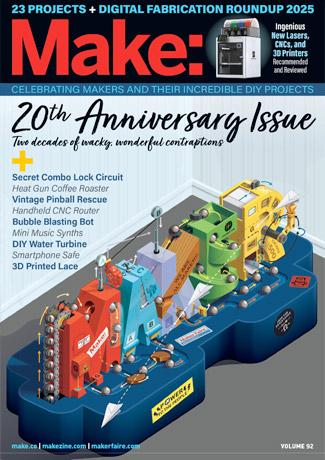

The punchline, of course, is that the final gear is embedded in a block of solid concrete.
I haven’t been able to figure out where Machine with Concrete currently lives; many of Ganson’s works are at the MIT Museum, but I couldn’t find any definitive information about this one, and would be glad to hear from anyone who knows.
Wherever its home, I wonder about its duty cycle: Has it been running continuously since completion? If it’s in a museum, is it only run during museum hours? And though it’s easy to calculate how long it will take the final gear to turn a given distance, a more interesting question, to me, is a bit trickier: How long until it sticks? And, given that each 50-fold reduction in speed is also a 50-fold gain in torque, will it stick at all, or just slowly grind through the concrete?
Update: As of April 17, 2013, Machine with Concrete is on indefinite loan to the Exploratorium, and is currently on view. My understanding is that it still belongs to Ganson himself. Thanks to tipster Adam Ringel and to Jericha Senyak at the Exploratorium.
ADVERTISEMENT








